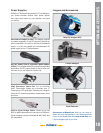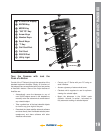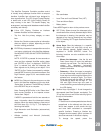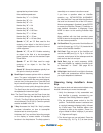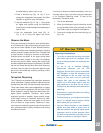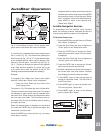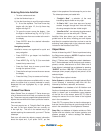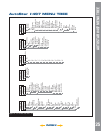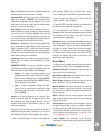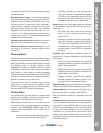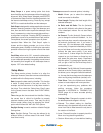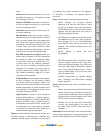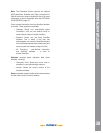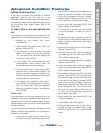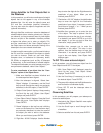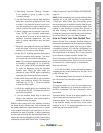
INDEX
AutoStar #497 HANDBOX
26
Star is a database of stars listed in different categories
such as named, double, variable, or nearby.
Important Note: When you are looking at descriptive
object text, pressing “ENTER” will synchronize the
telescope’s coordinates with the object. This is most
useful when synching on bright stars to achieve better
pointing in the vicinity of the star.
User Objects allows the user to defi ne and store in
memory deep-sky objects of specifi c interest that are
not currently in the LT Series database. See page 38
for more information (for complete instructions on how
to use the authoring tools please refer to the reference
manual included on the AutoStar Suite DVD).
Satellite is a database of Earth-orbiting objects such
as the International Space Station (ISS), the Hubble
Space Telescope (HST), Global Positioning System
(GPS) satellites, and geosynchronous orbit satellites.
In order to fi nd and track satellites, you must download
recent orbital data into the telescope.
Landmarks stores the location of terrestrial points of
interest that you create in the permanent LT Series
database.
IMPORTANT NOTE: To use the Landmark function,
the telescope must be located and aligned exactly as
when the landmark was added to the database.
• Select – To select a Landmark already in the
database (see ADD below), choose the “Select”
option and scroll through the list. Press “ENTER”
to select a Landmark, then press “GO TO” and the
telescope slews to the object.
• Add – To add a Landmark, choose the “Add”
option. Enter a name for the Landmark. Locate
and center the Landmark in the eyepiece, then
press “ENTER”.
Identify is an exciting feature for an observer who
wants to scan the night sky and start exploring. After
the telescope has been properly aligned, use the
AutoStar Arrow keys to move about in the sky. Then
follow this procedure:
Important Note: Only use the Arrow keys to move the
telescope during the Identify procedure. Do not move
the telescope manually or the alignment will be lost.
1. When a desired object is visible in the eyepiece,
keep pressing MODE until the “Select Item: Object”
menu is displayed. Press ENTER to select this menu.
2. Scroll through the Object menu options until the
“Object: Identify” screen appears.
3. Press ENTER. AutoStar searches the database for
the identity of the object being observed.
4. If the telescope is not directly on an AutoStar
database object, the nearest database object is located
and displayed on the screen. Press GO TO and the
telescope slews to that object.
Browse allows you to search the database for objects
with certain parameters, much like a search engine.
“Edit Parameters” lets you set various parameters for
the search, such as: Object Type, Minimum Elevation,
Largest, etc. Once you have set the parameters of
the search, select “Start Search” and press ENTER.
AutoStar will display the results of the search. See
page 40 for more information.
Event Menu
The Event menu provides access to dates and times of
astronomical events. The Event database includes:
Sunrise and Sunset calculates the time that the Sun
rises or sets on the current date.
Moonrise and Moonset calculates the time that the
Moon rises or sets on the current date.
Moon Phases displays the date and time of the next
New, 1st Quarter, Full and 3rd Quarter Moon.
Meteor Showers provides information on upcoming
meteor showers, such as the Perseids, the Leonids,
etc. Also lists the dates of the showers and when they
reach maximum.
NOTE: Meteors are fast moving objects that cover
large areas of the sky and are usually best observed
with the naked eye.
Solar Eclipse lists upcoming Solar Eclipses, including
the date and type (total, annular, or partial) of eclipse,
and the location and time of the fi rst and last contacts
of the Moon’s shadow. Use the Scroll Up and Down
keys to display the available data.
Remember, never
use a telescope to look at the Sun!
Lunar Eclipse lists upcoming Lunar Eclipses,
including the date and type (total, partial, penumbral)
AUTOSTAR #497 MENU OPTIONS
26



